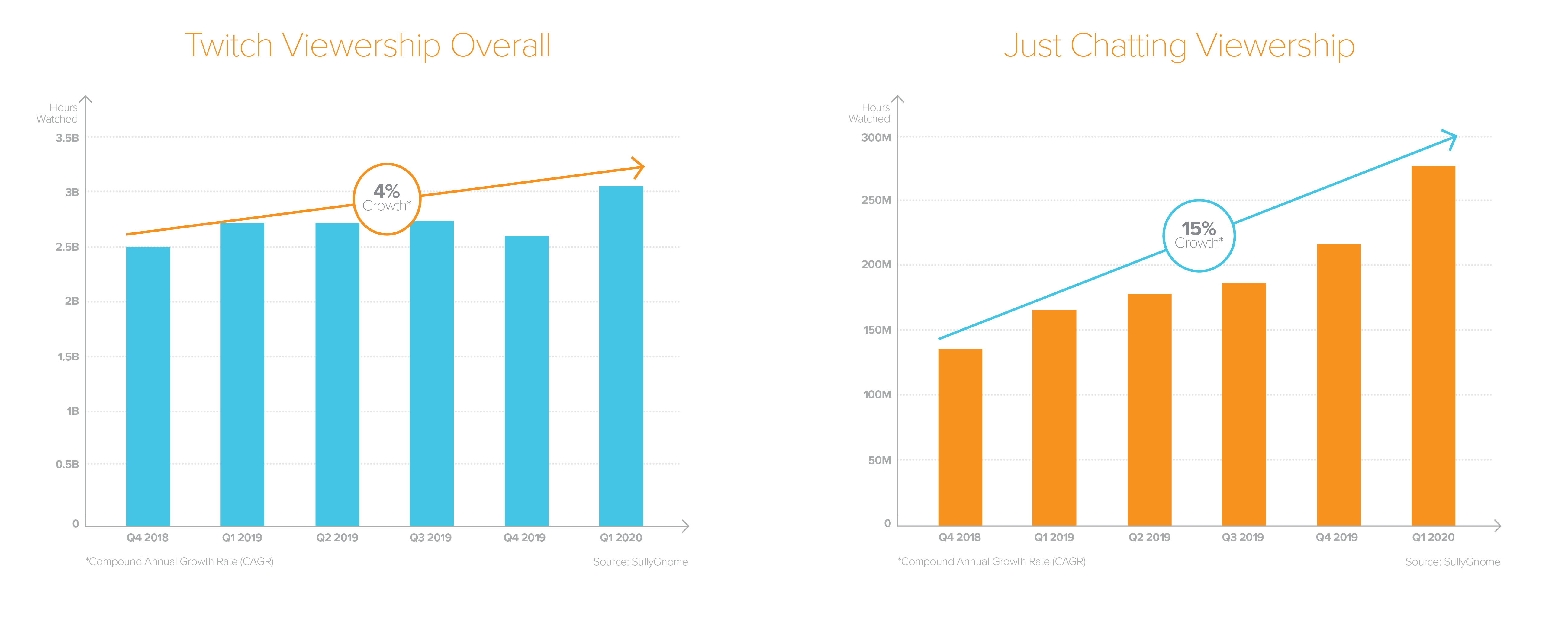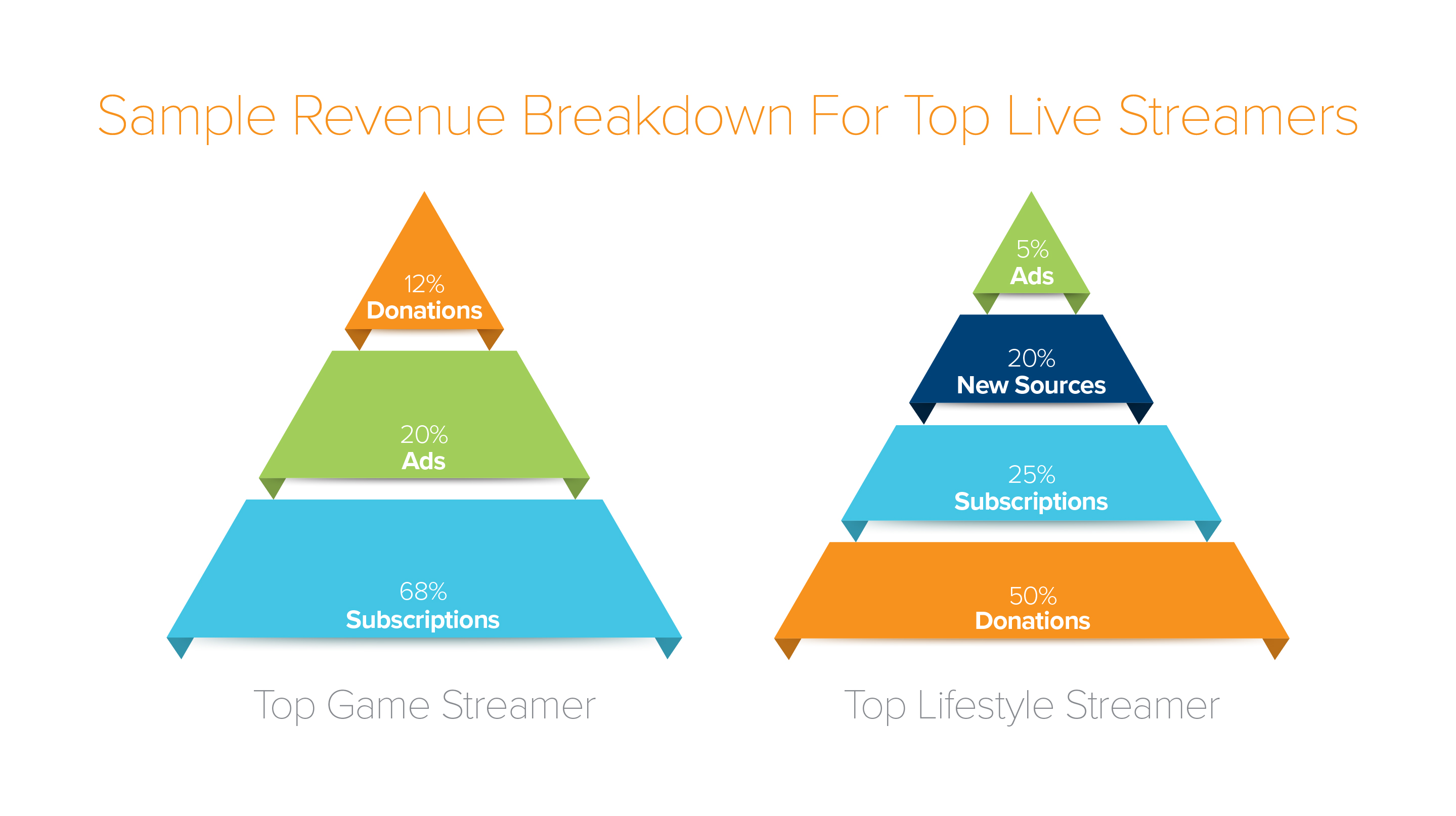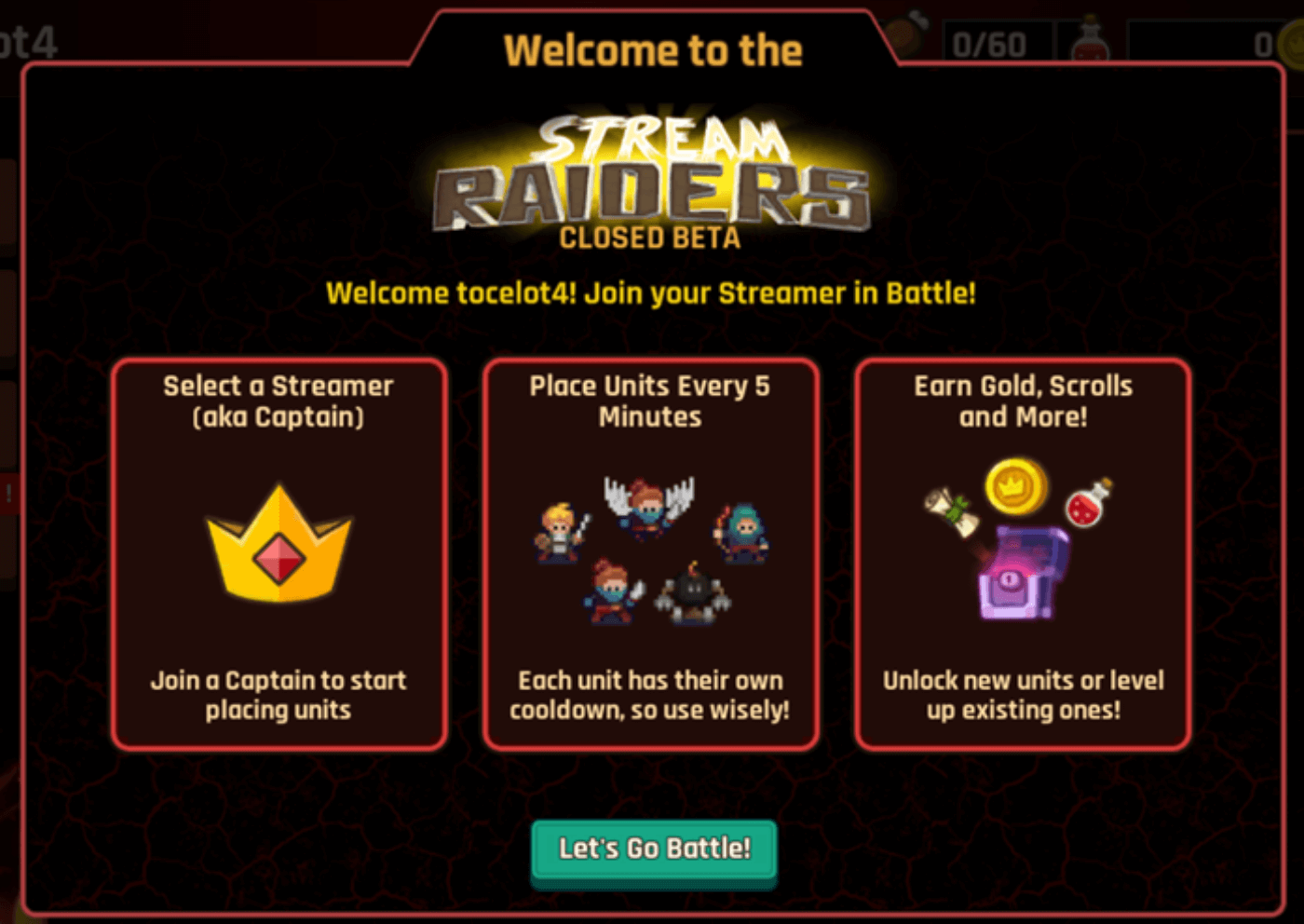As the shelter-in-place restrictions have tethered many people to their homes, livestreaming—broadcasting user-created video in real time—has skyrocketed. Platforms like Twitch, Caffeine, YouTube Live, and Facebook have all been flooded with record numbers of streamers and spectators.
Historically, livestreaming has been synonymous with gaming. Twitch and Mixer, for example, are known for turning professional gamers like Tyler “Ninja” Blevins into household names. More recently, however, a new streaming audience has emerged, one hungry for non-gaming content. Over the past two years, for example, a category on Twitch dubbed “Just Chatting”—in which streamers chat with their viewers in real time—has grown nearly four times as quickly as Twitch overall. And as platforms like Caffeine launch entertainment shows and pop culture streams, that trend is playing out across the industry. Through its unique ability to drive both rabid engagement and instant monetization, livestreaming is becoming the future of live video entertainment—and stretching beyond its gaming roots in the process.

Overall watch-time growth for Twitch has slowed to the low single-digits over the past year; by comparison, Just Chatting increased at a 15 percent compound growth rate. (Charts provided herein are for informational purposes only and should not be relied upon when making any investment decision.)
The dynamics behind livestreaming and engagement
Witness the rise of a new class of influencer: the lifestyle streamer. This category encompasses a broad variety of interests, from travel to fitness to finance. The growing pantheon includes celebrities like Drake, who hosts battle rap shows on Caffeine; environmental conservationist Maya Higa, who showcases falconry and endangered animals on Twitch; chef Bobby Parrish, who teaches viewers how to prepare keto meals on Youtube Live; and cosplay artist Kaitlyn “Amouranth” Siragusa, who eats, works out, and even sleeps on stream as her 1.4 million followers chat with (or at) her in real time.
The common thread that runs through these streams is the focus on the person, not necessarily the activity. Without a game taking up visual (and cognitive) space on the screen, the streamer’s personality becomes the main focus. Why would viewers find it compelling to get to know the lifestyle of complete strangers on stream? The short answer: loneliness. The best lifestyle streamers engage fans and make them feel like an active participant in an intimate community, rather than a detached viewer.
Lifestyle streamers are often intimately acquainted with their followers—so much so, that many greet returning fans by name and take suggestions for their daily agenda. In contrast, while top game streamers can draw massive audiences, the cognitive load required for gaming means relatively less time to engage viewers.
Thus, community is the true driver behind the growth of lifestyle streaming, relative to both linear video and game streaming. For millions of people today, watching and conversing with their favorite lifestyle streamer is much more engaging than passively watching Netflix, particularly amid prolonged shelter-in-place orders.
Lifestyle streams unlock superior monetization models
The move to lifestyle streaming also offers a promising solution to one of the toughest challenges facing creators these days: making money. Historically, the top 1.2 percent of streamers on Twitch, for example, earned the majority of the revenue on the platform. Superstars like Ninja reportedly pulled in more than $500,000 a month. By comparison, most of the platform’s 150,000 “Affiliate” creators, those with smaller followings, earn less than $250 a month. The remaining segment of Twitch’s 2 million creators made little to no money at all.
The top revenue sources for livestreamers have traditionally been:
- Subscriptions
- Advertising
- Donations
- Sponsorships
Top gaming streamer Jeremy “DisguisedToast” Wang (1.3 million followers) claims to make roughly $20,000 a month, not including sponsorships. He breaks down his typical monthly income at left:
In contrast, revenue for a lifestyle streamer looks more like the pyramid on the right. A deeper relationship with fans, as well as the ability to respond to an audience in real-time for certain types of content, means the majority of income comes from donations.
Traditional creator revenue sources, such as subscriptions, are also amplified for livestreamers. Lifestyle streamers tend to retain fans better than gaming streamers: whereas the former trades on personality, the latter may lose fans when a particular game wanes in popularity. And with their highly differentiated, colorful personalities, lifestyle streamers make attractive sponsorship targets.
But beyond existing monetization models, lifestyle streamers also have the ability to tap into new revenue pools, both on and off platform. A few examples:
Social Validation
The top Just Chatting streamer of 2019, Félix “xQc” Lengyel, makes roughly $1,188 an hour on “Media Share Mondays,” an all-day event in which he watches YouTube videos hand-selected by his fans. xQCow’s 2.3 million followers pay 33 cents per second to watch his reactions to their favorite videos. As a role model and tastemaker for his audience, he’s effectively selling social validation.
https://youtu.be/h-Qr0LIkhag?t=359
Private Membership Groups
Many lifestyle streamers have been able to monetize their most ardent fans via paid, closed membership groups. For example, cosplay streamer Amouranth maintains close to 1,000 subscribers on her Patreon, where she provides exclusive photographs of herself in costume for between $20 and $850 a month. For the very highest subscription tier, patrons unlock the ability to text message Amouranth directly at any time, whereas lower tiers are restricted to Discord or group Hangouts.
Companionship / Coaching
Similarly, many lifestyle streamers sell companionship directly to their audience, either by playing games with fans or booking time off-platform. The studio Stream Captain, for example, has designed a game called Stream Raiders where viewers serve as individual units in a streamer’s army. The start-up Legionfarm matches streamers and esports pros with regular players to serve as game companions, at an average rate of $14 per hour. And on marketplaces like Fiverr, streamers offer coaching on subjects ranging from fitness to photography to personal finance.
Commerce
Finally, livestreaming commerce is an emerging revenue channel that is ripe for growth. Previously, my partners have called ecommerce the “killer app” for video platforms; similarly, it’s a growing source of income for livestreamers. Many streamers are viewed as tastemakers and recommend products to their audience in exchange for commissions. Chance “Sodapoppin” Morris designs and sells a collection of curated metal prints, as well as his own line of lifestyle apparel. Start-ups such as Chrono.gg go a step further, enabling creators to set up their own ecommerce stores to sell products directly to fans.
While many of these new revenue channels are still nascent, they are growing quickly. Collectively, these avenues offer far greater monetization potential than traditional, ad-driven models. Lifestyle streamers have a broad toolkit at their disposal and the flexibility to choose a monetization model that best complements their particular brand.
The next generation of livestreaming
The first generation of livestreaming influencers were professional video game players. With the growth of non-gaming content on platforms like Twitch, Caffeine, and Youtube Live, we are witnessing the rise of the next generation of lifestyle streamers. For them, personality is king—gaming is just one of many ways to engage fans.
What has always made livestreaming as a medium uniquely compelling is the ability to combine the reach of a public broadcast with the community of a small group. As people become increasingly removed from traditional sources of community during the pandemic, lifestyle streamers are going live to help fill that void.
-

Jonathan Lai is a General Partner at Andreessen Horowitz, focused on a16z speedrun. He invests in early-stage teams building tomorrow’s AI x creative landscape—from developer tools to 3D simulations, vertical agents, and novel storytelling formats across video, games, audio, and more.
-

Andrew Chen is a General Partner at Andreessen Horowitz. He is focused on tech, entertainment, and AI via the a16z speedrun initiative.



